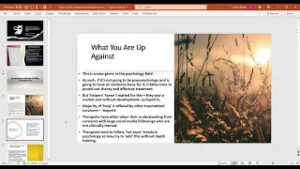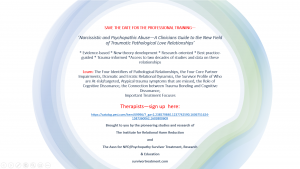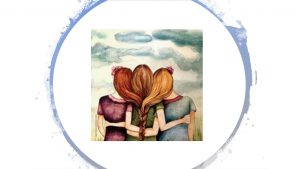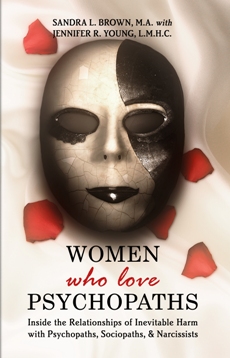Excerpt from the Foreward from “Love Lessons,” a Soon-to-be-Published Book
Part III – October 2009
The “wounded healer” is a prevailing archetype of our time. If and when we can honor our path to wholeness with integrity and fierce honesty and love and compassion, faith and humor, we can then help others to do the same on their journey. There is symmetry in balance in coming to the conclusion, that those, who can most help the hurt and the traumatized children among us, are those who have taken on their own journey, healed their own trauma, and left no stone unturned.
As Jody writes about Victoria:
She is fighting a battle, daily, to free her heart. She didn’t even know she had a heart at war. It’s the only heart she has ever known. That sounds eerily familiar to me. This journey is the exact one that I was on. She was trying to free her heart of the very same things I was, so that her capacity to feel love and express empathy would increase. I don’t know who could understand and know the pain I have felt except for Victoria her. And I was raised in a home with loving parents and a family. She was a lone orphan living in an institution. Five thousand miles away in an institution. Our paths cross and we helped each other fix what we could not do for ourselves.
“From his mom.” she replied, like I should have already known. “That’s where everyone learns love lessons.”
What are the conditions that precipitate or necessitate a thorough self examination are not of the greatest importance. Only that we do it, and continue to do it, until we are done, and as it comes up again and again. More encouragement, landmarks and guideposts along this journey, are often necessary and always welcome. Moms and dads often report feeling lost.
I thank Jody and Jason for sharing all of the paths and passageways along their journey with Victoria us all. I hope it is of help to parents and professionals alike.
Daniel Siegel, MD, and his colleagues have made great contributions to our understanding of Developmental Neuropsychology. Through advances in technology, this research area has been able to demonstrate that theories of attachment are hard wired in brain development. His findings support his conclusion that the “coherent narrative” of the mother, (of the primary bonding figure) is the single greatest factor that determines whether the child will be able to successfully bond and attach to the mother, to the bonding figure.
Fonagy from Great Britain have shown that the attachment pattern of an adopted child will mirror that of the adoptive parent after 3 months of placement.
When children from hard places are taken into the home, what appeared even at deep levels as the “coherent narrative” of the mother and father, can be terribly shaken up by these children. The children’s trauma history is so powerful and pervasive; It is routinely filled with rejection, trauma, in utero drug and alcohol exposure; exposure to violence, and/or overcrowded orphanages. Therefore, their core belief system has concluded I will not bond. I will not be loved. It is safer to reject, before I am rejected…. AGAIN!
Helping birth children make a safe passage from childhood to increasing levels of healthy independence, while remaining attached to family, can give a parent an understandable sense of accomplishment, pride and a certain security in one’s ability as a mother and father. Parenting traumatized, and attachment challenged children will provide the opposite experience of oneself as a parent.
Mothers like Miss Bean, who have raised her sons so well, are qualified to bear witness to the fire, that burns when a “good home” takes in a child from a “hard place.”. The courage required of such a journey is unparalleled. She and her husband, Jason, survived, and can now tell the story so that mothers, fathers, and professionals anywhere can learn as witness to this journey. And since mothers, fathers, and even professionals are routinely if not always heard to say that they need information about this challenge, it is my hope that this can be a resource for adoptive mothers, and those, who try to support these families.
Understanding and treating Attachment disorder, Reactive Attachment Disorder, Attachment challenges, or problems resulting from pervasive sanctuary trauma, of the very young, have had a short and controversial history in psychiatry and psychology. Research literature has focused on attachment as a relationship between two people. Some in the treatment field have placed the onus of change on the traumatized child. Thus, treatment and research have often diverged. Universities study the attachment relationship to great gains in understanding. Treatment focuses on attachment disorder as a problem that the “traumatized” child brings to the relationship.
In a way, this different focus for treatment providers is understandable. A loving family, with great morals and values takes a child in. The child rejects the families love. Is that the families’ fault? No it is not. And yet, what experience and perspective are teaching us, is that taking in children from hard places, will often times, test a marriage, a relationship, a parent, to its very core. It is said that adoption of traumatized and attachment challenged children results in an 85% divorce rate. This seems believable. If there is a chink in the armor within a parent or within a family, it will be identified, exploited, amplified and exacerbated by taking these children into one’s home. Families, who take these children in need to be understood, supported and applauded for the challenges they take on for the future of society.
I knew it was difficult to understand from the outside looking in but the suspicion was hurtful. Other people thought they could provide what I am not giving. So did I, once upon a time. Just more love. I have loved this girl more than anyone despite what I could not do for her. This love brought her to our home. This love allowed her to stay. This love will mend her. This love will allow her to love others. And despite what they thought, they had not seen her love. – p.150
Should these families be vilified, ridiculed and unappreciated? Or should these families be seen as the last man on the dike, trying to hold the water back, before it blows for good! Should we be GRATEFUL? Why are these ladies judged so harshly..
James Heckman, Nobel Prize winner for Economics, 2000, demonstrated that in North America at the year 2000 about 10% of our families are high risk families and use up the vast majority of community mental health resources in this country. If current trends in birth rates continue, then by the turn of the century, we may have 25% of the population at high risk. We can not support a democracy if ¼ of the population is at risk. As Dr. Bruce Perry demonstrates, most of our monies spent on “changing” people are spent when children are adolescents and young adults, i.e. once they enter the criminal justice system, and to a lesser extent psychiatric hospitals. If we want to make a difference, then we need to put our resources to work at the beginning of life. Ninety percent of brain development occurs in first 3 to 4 years of life. Personality and core beliefs are formed by that age. The attachment patterns observed at 12 to 18 months of age, will prevail across the lifespan, barring the untimely death of a parent, or major change in life circumstances, illness, poverty, violence, addictions while the child is still very young.
Families, who take on damaged, neglected and rejected children, are working for all of us, and for our children’s future. As an industry, we simply have to do a better job of preparing families for the challenges routinely inherent in adoption and foster care. As a people and a society, we need to encourage and accommodate any and all willing families, who are able to do this work or act of love.
In “Love Lessons,” we do take the intimate journey with Jody Bean, her husband Jason, her daughter, Victoria, her family and her therapist, through the challenges and traps inherent in bringing a traumatized child “home,” and keeping her home. It is challenging, but both mother and child can be transformed in the process of going through the fire. Miss Bean shows us the way in, and the way through. I thank her and
everyone around her for making this journey successfully, and furthermore for making it available to the rest of us.






